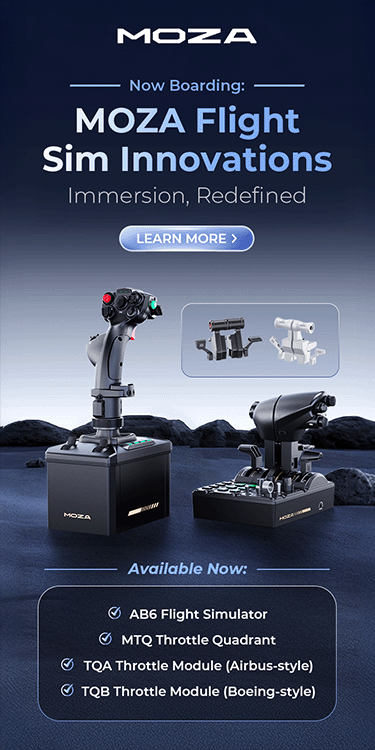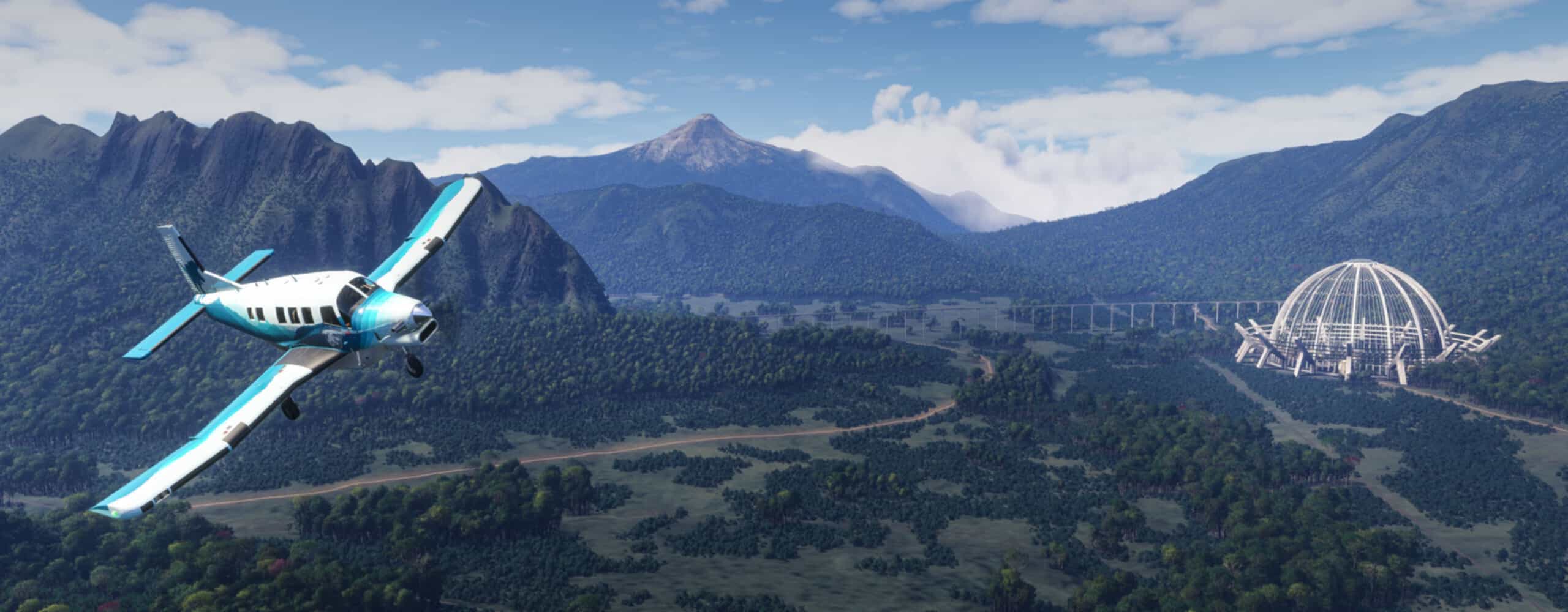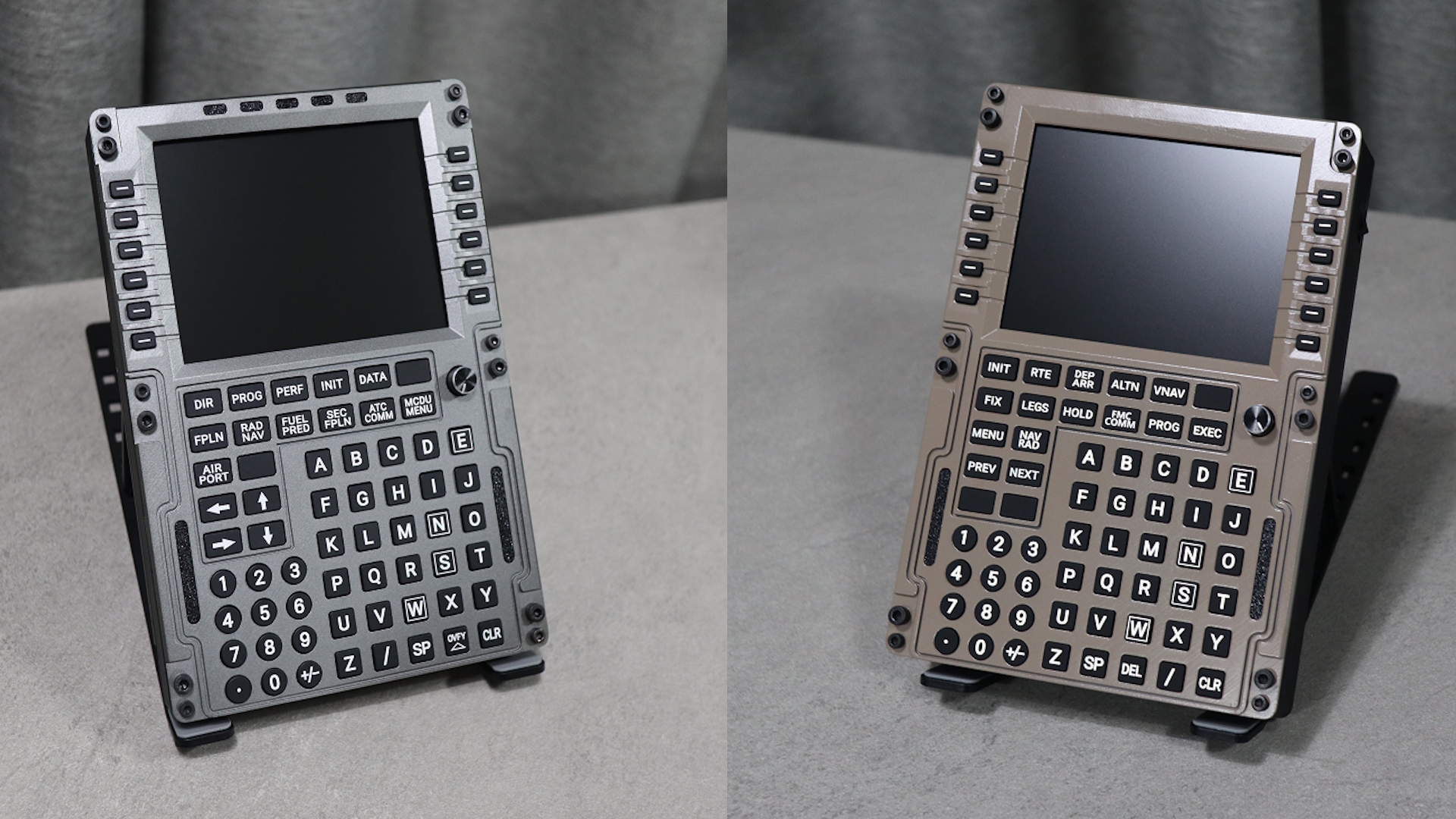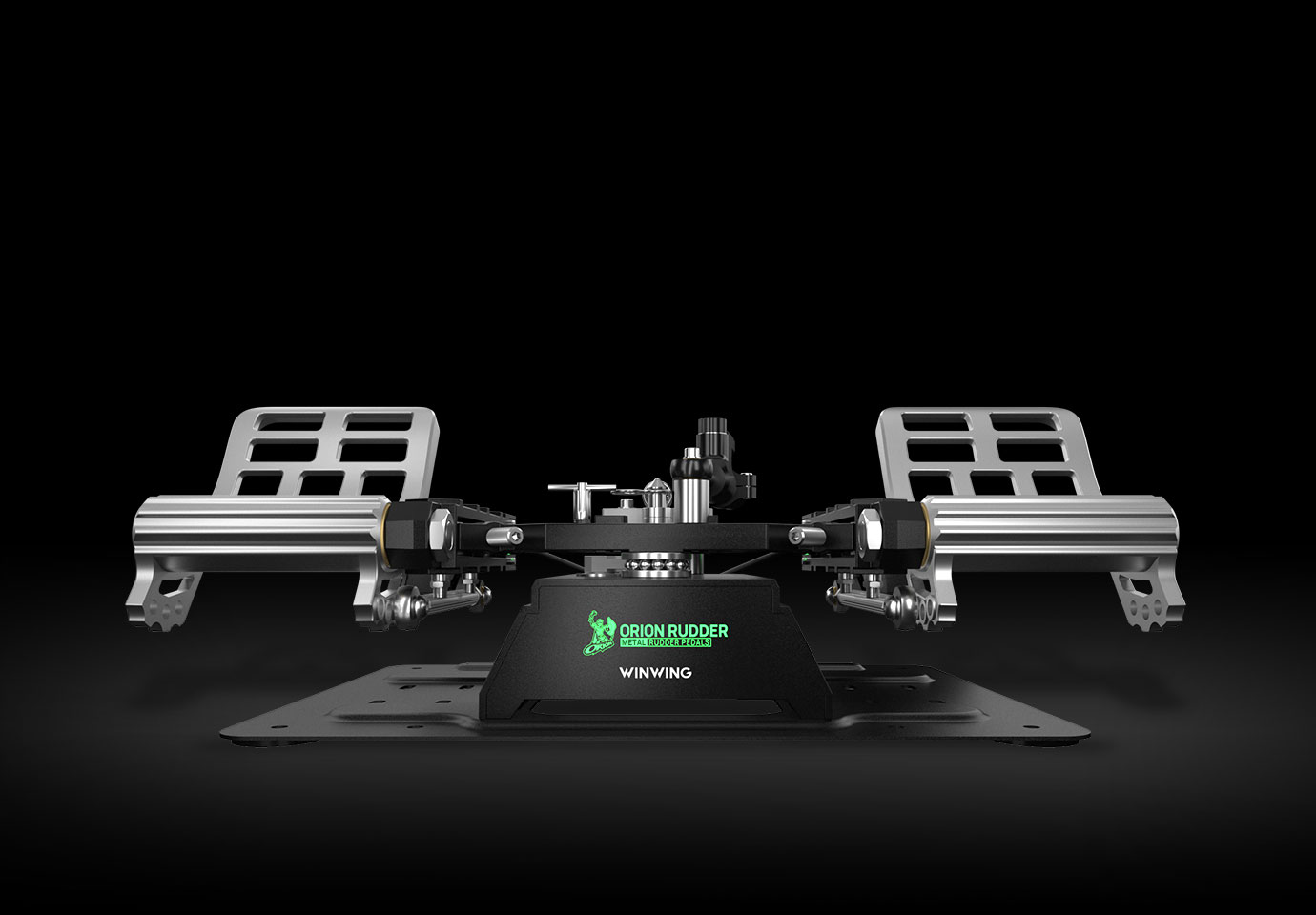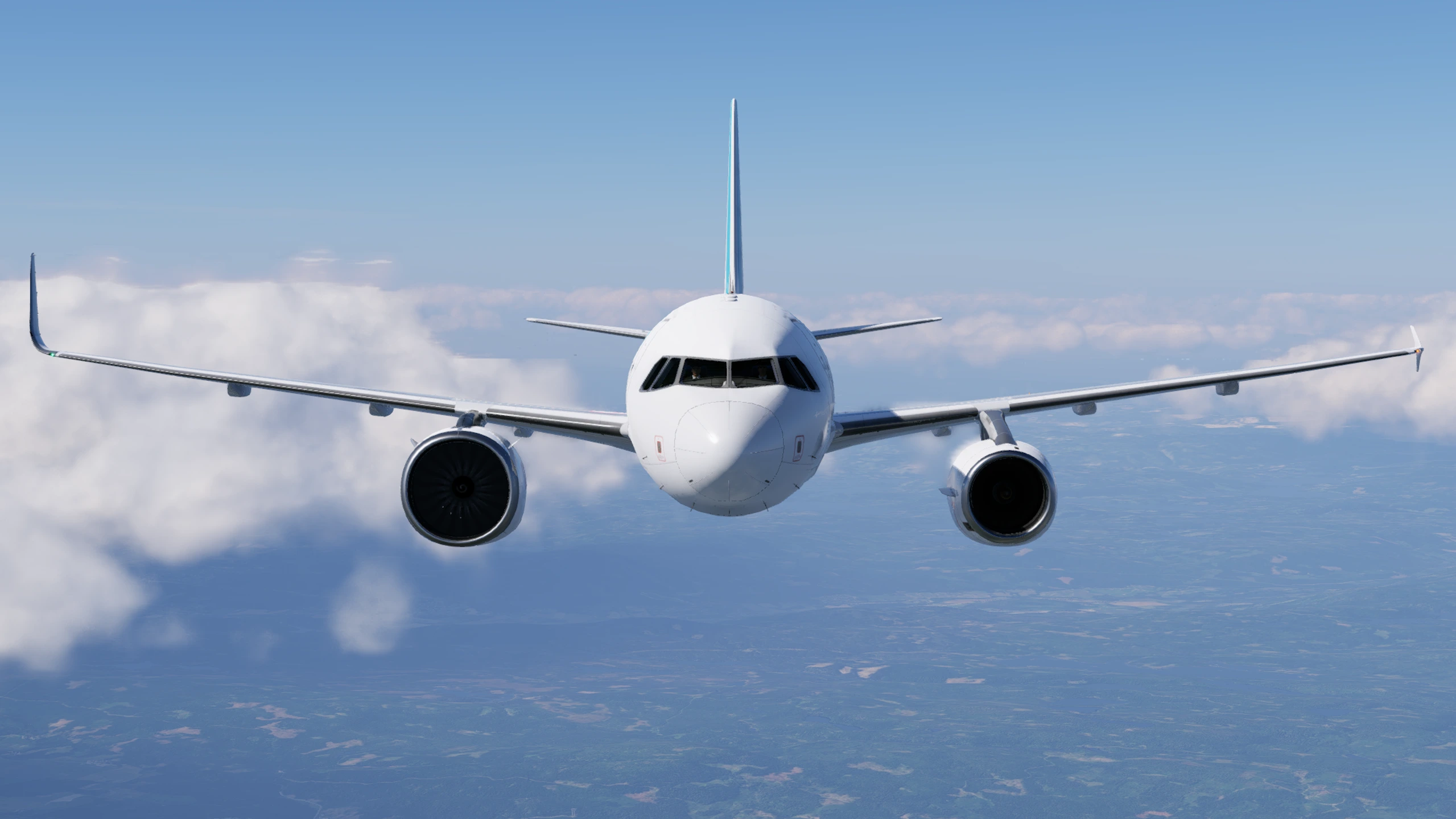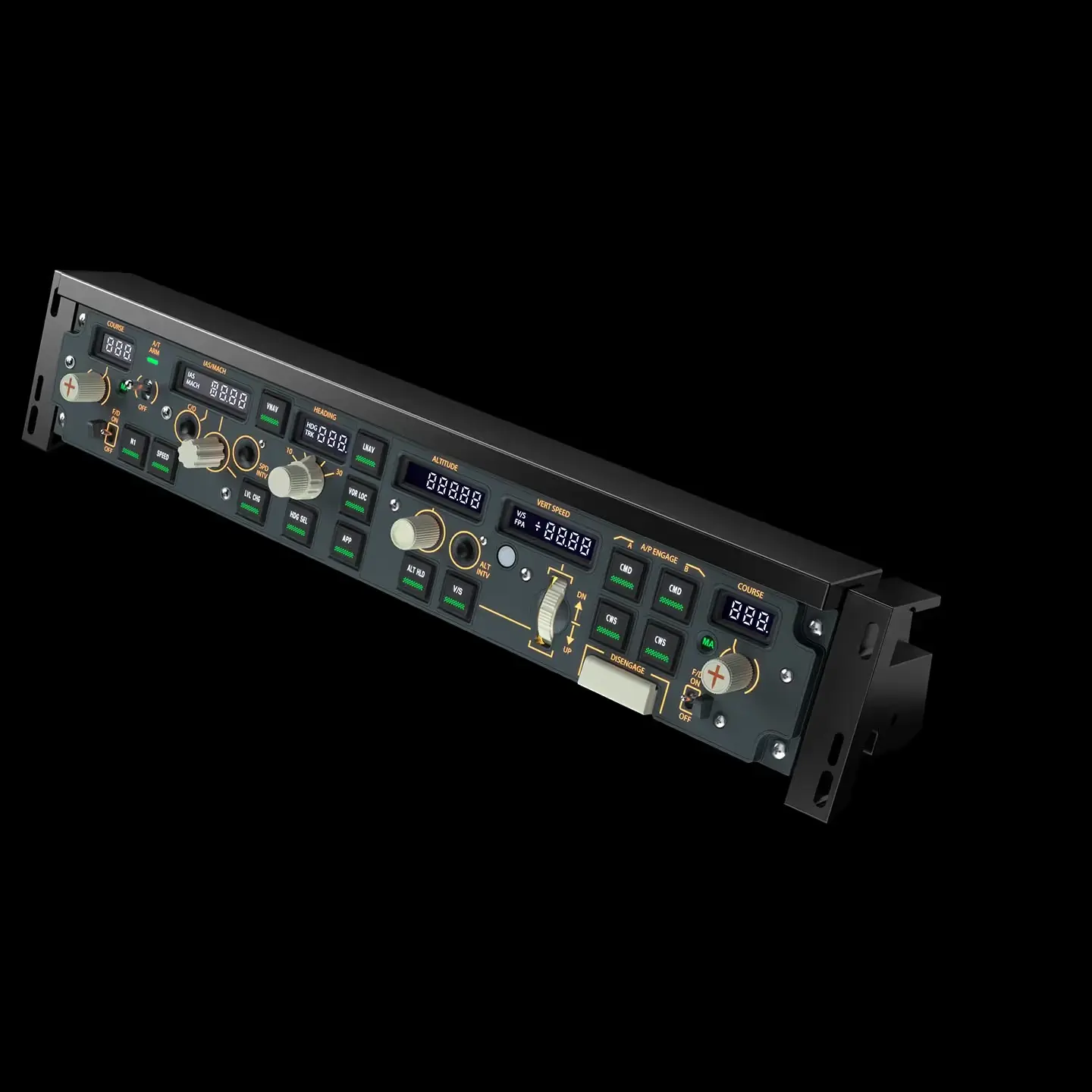Threshold Review: MOZA MTP and MTLP Throttle Quadrant
June 5, 2025
In this review
- MTP Throttle Panel
- 329 USD
- Throttle Panel Mounting Bracket
- 19.90 USD
- MTLP Take-off Landing Panel
- 149 USD
(all products have been provided to us free of charge)
Throttle panel MTP
I've had the MOZA MTP Throttle on my desk for quite some time now. Long enough to get a real sense of how it performs over time. My unit is a pre-production model, and while this review took longer than expected, the delay allowed me to test it thoroughly across different setups and flying styles.
MOZA's packaging is very sturdy, but they use a foam, which isn’t very eco-friendly. I would like to see a more eco-friendly alternative, like the cardboard material MOZA has in their R3 wheel bundle packaging.

First Impressions
Albeit being F-18 inspired, the throttle lever immediately reminded me of the Thrustmaster HOTAS throttle at first glance. But unlike the right-angled, boxy shape of the Warthog throttle, the MTP features a tapered, trapezoidal profile that narrows towards the base. This not only gives it a more modern, integrated aesthetic but also contributes to its desk presence by making it look less bulky despite its physical footprint. MOZA’s Throttle Quadrant isn’t made of aluminium or other metals like I’ve come to expect from MOZA’s other products. Everything I’ve experienced from MOZA has been solid metal, exuding a sense of premium craftsmanship. The base here, however, is made of plastic and designed to look like metal and it features two metal plates with the MOZA logo on either side, which elevate its visual appeal.

Once you peel off the protective plastic, the overall aesthetic improves. The glossy, glass-like plastic surfaces around the switches lend the unit a modern and clean look, though I foresee potential issues with fingerprint smudges, dust marks, and scratches over time. It’s worth noting that while the plastic is less dominating visually once set up, it’s still clear this is a design decision to meet cost goals, rather than to elevate the tactile experience.
The screws that look like they fasten the individual plates on the top are fake. Well, not all of them. The ones on the edges are real, revealing that the top plate is designed to seem like several modules, but in reality, the screws secure the whole top plate as one unit. I quite like this design, and does add a premium feel. Even now that I have “uncovered” the truth, it makes me appreciate the thoughts behind the design more.
Buttons and Switches
While the buttons and switches on the throttle levers feel solid and functional, what I’d describe as a higher mid-tier level, the base is a somewhat different story. Let’s start with the positives: the metal switches are excellent. They feel sturdy, with a crisp and satisfying click when operated, giving you confidence in their durability during intense use. The other buttons and switches on the throttle handle also perform well, delivering tactile feedback that matches their positioning and intended use.
However, the rotary knobs on the base are disappointing. They are made of light, cheap-feeling plastic and wobble when touched. While the wobbling doesn’t impact functionality in any way -they are precise and provide good feedback during operation - it does take away from the premium feel that MOZA usually delivers. I suspect the wobble is due to how they’re fastened, which means it’s more of a design issue than a durability concern. Still, for a product in this category, I expected better.

Another concern is the trim wheel on the lower right of the base. Like the rotary knobs, it functions well and moves smoothly, but it feels noticeably cheap to the touch. It doesn’t affect usability but detracts from the overall sense of quality. These small details may not be deal-breakers, but they add up. I’d be willing to pay more, say, an extra $20, just to see these lower-quality components brought up to the level the rest of the unit deserves.
One final note on the rotary knobs: they rotate infinitely. Since they’re labelled for functions like formation lights and position light brightness, which typically operate within a fixed range from zero to one hundred, you never get a tactile indication of reaching the end of travel. This might be frustrating for some users expecting physical limits. Still, I don’t mind it as much, especially considering the rotary knobs are fully assignable and can be repurposed for other functions.
Back in January, I had the opportunity to provide direct feedback to MOZA’s development team. In response, they confirmed that reusable nano glue would be included with retail units to help stabilise the base and that a dedicated table clamp is now being developed. They also acknowledged the issue with the rotary knobs. While the material won’t change, production units will include stronger adhesive to keep them firmly in place. I want to emphasise this: while these changes are welcome, they are ultimately workarounds. I’ll still critique these areas in the review, as I would have preferred to see these issues resolved in the final hardware design. However, when feedback was submitted, the product was already too far along in production to allow for more fundamental revisions.
In the end, though, what matters the most to me is the feel of the throttle lever and it's switches. It is the area of the unit that will be used the most, and the quality of all its components makes the lack of quality in the rotary switches forgivable. It's not something I think of during flight anyway.
Throttle Lever
The throttle lever itself is a standout feature and deserves praise. This two-engine design can be easily locked into a single-lever configuration via a mechanism on the back of the unit. The locking system is intuitive and smooth to operate, making it versatile for different types of simulations. The levers are also taller and offer a more extended range of motion - or “throw” - than any other throttle levers I’ve tested. This added travel makes them exceptionally precise and well-suited for fine adjustments during all phases of flight.
Another unique feature is the detent system, which consists of three removable modules. These modules can be repositioned to customise the detent positions, allowing for configurations like a centre detent for neutral throttle or a detent for afterburner engagement at full forward. The flexibility is fantastic, though I’ve found the default positions to be the most practical for my use.

The reverse lock mechanism is another thoughtful addition. To move the throttle into full reverse, you must pull a lever on each handle, allowing the levers to move past the detent. This is a clever feature that I haven’t seen in other throttle quadrants of this type, and it works well once you get used to it. However, there’s a learning curve since your fingers can get pinched at full forward if you’re not careful about keeping them on top of the levers. After a few missteps, it becomes second nature, a feature I’ve come to appreciate for its practicality and uniqueness.
In Use
A surprising design oversight slightly impacts the throttle’s functionality: the base tends to wobble when placed flat on a table. While it features two rubberised areas underneath to prevent sliding, they’re positioned too far inward. As a result, the unit tilts diagonally, particularly towards the back right when operating the throttle. This issue becomes more apparent when you rest your hand on the throttle, as its natural weight distribution leans into the exact tipping point of instability. Operating the throttle handle in this state makes the unit feel unsteady, which is inconvenient and unexpected for MOZA, a brand typically known for its meticulous attention to detail.
Compounding this issue, the rubber material - or, more likely, the insufficient amount - fails to provide adequate slip resistance. On smoother table surfaces, the throttle can slide during use. While loosening the tension on the throttle levers can mitigate the sliding, it’s not an ideal or long-term solution. Thankfully, adjusting the lever tension is straightforward, using hex screws (Unbrako) conveniently located at the front of the throttle levers. This will ease the force that leads to the unit sliding.
For those planning to use the throttle on a flat surface without mounting it with screws, I highly recommend investing in the optional bracket add-on. This accessory includes suction cups, which should have been included with the base unit by default. The suction cups alone can be mounted directly to the throttle base to eliminate sliding. Still, the bracket offers an additional layer of stability, albeit at the cost of widening the throttle by a couple of centimetres. Once installed, the wobbling and sliding are completely resolved, making the throttle feel much more secure. While this solution works well, it’s disappointing that such a fundamental stability issue wasn’t addressed in the base design.
Features
Lights
MOZA has continued to improve their software steadily during the time I’ve had this unit. When I started writing this review, telemetry-based lighting wasn’t working. Specifically, the APU Ready light was non-functional, which has since been resolved. The lighting system now supports sim-driven telemetry via the MOZA Cockpit software, allowing specific indicators like the APU Ready light to respond to in-sim events as expected. While lighting on this unit is pretty minimal and understated, the fact that it integrates with sim telemetry adds welcome depth to the experience.
Vibration Mechanism
The throttle lever houses a built-in rumble motor that provides vibration feedback based on aircraft events such as aerodynamic stress, stall conditions, and simulated turbulence. While the feedback is relatively subtle, it’s surprisingly effective in enhancing immersion. It’s not overpowering or distracting but delivers just enough tactile response to let you feel what the aircraft is doing, particularly during takeoff, landing, or aggressive manoeuvres.
Vibration parameters can be adjusted through MOZA Cockpit, where you can fine-tune the intensity and the specific triggers. While this isn’t a complete haptic feedback system, it’s a well-implemented feature that brings meaningful depth to the overall experience, especially considering the price point.

Moreover, the MTP’s vibration works exceptionally well alongside other feedback systems. If you already use devices like a force feedback joystick, a Buttkicker or the HF8 haptic pad, the MTP’s built-in feedback adds a layer of sync that complements rather than competes with those systems. The combined effect creates a richer, more cohesive sense of aircraft behaviour and makes MOZA’s approach to tactile immersion stand out even more.
Software
MOZA Cockpit is the configuration utility for the MTP Throttle and its connected modules. It provides a transparent and responsive interface for managing key settings such as axis calibration, vibration strength, lighting control, and vibration strength.
The lighting system supports both manual brightness control and telemetry-based lighting modes. Brightness levels for the console and instrument panel lights can be individually set, and a toggle lets you switch between device-controlled and telemetry-driven behaviour.

The live input diagram on the right side visually highlights each button or axis as triggered. This makes it easy to verify mappings and troubleshoot any configuration issues.
While the software does not yet offer direct integration or presets for flight simulators like MSFS, X-Plane or DCS, all controls are fully mappable within those sims. MOZA Cockpit handles the hardware layer reliably, and the platform has improved with consistent firmware and software updates.
Throttle Panel Bracket Addon
The bracket add-on comes equipped with suction cups that are secured using hex nuts, which tighten onto the threaded posts with minimal effort. Installation is straightforward: the bracket attaches to the base of the throttle with four screws, and the suction cups mount at each corner of the plate, extending a few centimetres beyond the left and right sides of the throttle quadrant.

Once installed, the bracket and suction cups completely eliminate any wobbling or sliding of the MTP. The result is a rock-solid base that transforms the overall feel of the unit. In fact, this is probably the most stable throttle quadrant I’ve ever had on my desk. Given the improvements in usability and stability it provides, this bracket feels less like an optional accessory and more like a missing piece of the base package.
Even if the full bracket wasn’t included, and is an optional extra, the suction cups absolutely should have been. They can be mounted directly to the existing holes on the base, making them a cost-effective and straightforward addition that would have resolved the stability issues out of the box.
MTLP
The MTLP attaches with two screws at the front of the throttle panel and is a module that has been part of the overall design process from the beginning. Once mounted, it slopes gently away from the base at an angle, making the switches easy to identify and operate, even without looking. It is a natural extension of the MTP throttle, not an afterthought.

I’m not sure I can offer any real criticism of this unit. At least not anything that matters. If I had to nitpick, I’d mention the slightly cheap feel of the plastic on the weapon selector and the hook lever. But even that feels minor. The MTLP add-on not only expands the functionality of the MTP Throttle, it also adds to the physical stability of the setup by increasing the footprint and anchoring it more firmly to the desk. I still recommend using the optional bracket if you want maximum stability during use, especially on a flat surface.

Every switch and lever on the MTLP has a unique design or mechanism, and none are shaped alike. This makes it easy to identify them by feeling alone. A detail that shows real consideration for use during flight. The gear lever, anti-skid switch, and arresting hook lever all require a pull-out motion before operation, adding realism and preventing accidental activation. The gear lever also includes a neutral position, a nice touch.
The parking brake mechanism adds another layer of realism. It must be pushed inward to rotate it from the horizontal position and back. When in the vertical position, it can only be turned to the left if pulled out first. A small but meaningful interaction that mimics how a real cockpit mechanism might behave, adding to the overall immersion.
I’ve encountered only a few minor issues, none of which are deal-breakers. The first is that the anti-skid lever can be awkward when the parking brake lever is horizontal. It’s a minor inconvenience and easy to work around, but worth mentioning. The second is that the MTLP unit requires its own USB connection, meaning the throttle setup now takes up two USB ports. It’s not a huge issue, but something to consider for future iterations, especially for users with limited USB availability. Also, MOZA continues to use USB-B connectors across their hardware. I would love to see a shift to USB-C, making cable management and quick changes between setups much easier.

In short, I love this add-on. It feels purpose-built, tactile, and thoughtfully laid out. It elevates the entire setup and adds just the right amount of mechanical satisfaction to the sim experience.
Conclusion
I have no idea how much this unit would weigh if it were built entirely from metal like the Thrustmaster Warthog, but I can only imagine it being far less practical for desk use. In that regard, I don’t mind that MOZA opted for plastic. The execution of the design is bold, but it works visually and functionally. And considering how much functionality you get out of the box, I don’t think it’s entirely fair to compare it to the Warthog directly. MOZA MTP just feels much more up-to-date and modern.
As my setup stands today, the combined cost of the MOZA MTP throttle, MTLP panel, and bracket is close to $500 USD plus shipping. That’s definitely on the steeper side, but MOZA offers something no other brand currently does, especially in a fixed-mounted cockpit. The number of switches and assignable controls, combined with standout features like the extended throttle throw, innovative detent system, reverse lock levers, and the excellent MTLP module, make it feel like a complete, modern throttle system.
Paired with the optional mounting bracket and suction cups, the overall stability is simply unmatched.. My only real wish is that MOZA had invested a little more in the tactile feel of the rotary knobs. They’re the one element that feels out of place in an otherwise premium-feeling setup. And while the wobble of the base unit without mounting support is a drawback, it’s a solvable one.

If you’re in the market for a throttle quadrant in this price range, I strongly recommend looking at the complete MOZA package, including the MTLP panel and the mounting bracket. It's not perfect but ambitious, thoughtfully designed, and highly capable. Once you start flying with it, the few drawbacks fade into the background. It’s a unit that has become my go-to throttle for anything from warbirds to helicopters. A friend of mine integrated it into his dedicated VR cockpit and we both wholeheartedly recommend this setup.
I want to thank MOZA for providing the MTP and MLTP Panel for review and their patience, as this review took longer to complete than originally planned. I appreciate their willingness to receive feedback and engage in dialogue during the process. It’s clear that MOZA is serious about its presence in the flight sim space, and I look forward to seeing how they continue to evolve.
If you enjoy our content and want to support Threshold, consider joining us on Patreon!
Share this page
COMMENT ADVISORY:
Threshold encourages informed discussion and debate - though this can only happen if all commenters remain civil when voicing their opinions.

